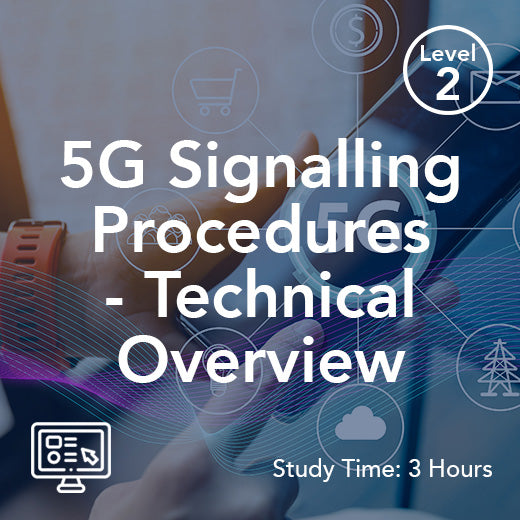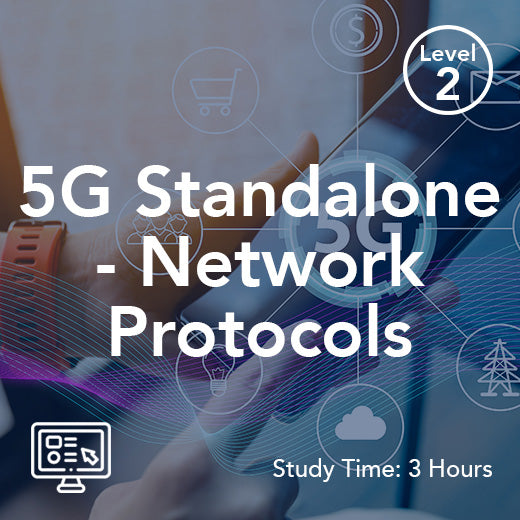Understanding GSM: What is GSM and How Does It Work?
- , by Stephanie Burrell
- 17 min reading time
In today's interconnected world, understanding the basics of mobile communication is essential. One of the key technologies that enable mobile connectivity is GSM, or Global System for Mobile communications. GSM, as a global system for mobile communications, was first implemented in Finland in 1991, marking the beginning of its global adoption. But what is GSM, and how does it work? As the most widely used mobile communication standard globally, GSM facilitates seamless voice and data transmission across networks, ensuring that people can stay connected wherever they are. This piece will unravel the intricacies of how GSM operates, offering a clear and relatable explanation of its operations and significance in our daily lives. Join us as we explore the foundations of this vital technology, which was designed as a secure wireless system.
Introduction to GSM
Defining GSM
GSM, which stands for Global System for Mobile communications, is a digital mobile network technology. Developed in the 1980s, it was designed to create a unified standard for mobile networks across Europe and has since become the dominant system for mobile communication and network technology worldwide. GSM helps identify a unified standard for mobile communication, making it easier for manufacturers and operators to ensure compatibility. The primary function of GSM is to provide a standard for mobile devices to communicate through voice and data. It operates on various frequency bands, allowing mobile phones to connect seamlessly with cellular networks. By digitising voice communications, GSM improves sound quality and reduces interference compared to older analogue systems. Additionally, GSM supports data services like SMS and internet access, making it a versatile choice for both personal and business use. The commercial launch of GSM services made them widely available to customers, driving rapid adoption in the marketplace. What makes GSM particularly practical is its international roaming capability, enabling users to access mobile services in different countries without needing to change their devices or phone numbers. GSM networks are deployed across multiple countries, ensuring seamless connectivity and supporting global roaming.
Brief History of GSM
The development of GSM began in the early 1980s, driven by the need for a unified mobile communication standard across Europe. Prior to GSM, different countries operated their own analogue systems, creating compatibility issues. In 1982, the European Conference of Postal and Telecommunications Administrations (CEPT) formed a group to design a standardised mobile system. By 1987, the first GSM specifications were completed, outlining a digital network capable of supporting multiple users with improved voice quality. The first GSM call was made in 1991 in Finland, marking a significant milestone in mobile technology. As mobile phone adoption grew, GSM's influence expanded beyond Europe. By the mid-1990s, it became the global standard due to its ability to provide seamless international roaming and consistent service quality. Today, the GSM global system is supported by a vast infrastructure, providing billions of people worldwide with reliable mobile communication.
Importance of GSM
GSM has played a crucial role in shaping the modern mobile communication landscape. As the first digital mobile network standard, it revolutionised the way people communicate by providing clearer voice calls and reliable data services. One of its significant contributions is the ability to offer international roaming. This means users can travel across borders while retaining mobile connectivity, a convenience that has become essential in today's globalised world. Furthermore, GSM's standardisation has driven down the cost of mobile devices and services, making mobile communication accessible to a broader population. It has also paved the way for advancements in mobile technology, such as 3G, 4G, and now 5G networks. GSM's robust security protocols have ensured safe communication, protecting users from eavesdropping and fraud. Overall, GSM's impact extends beyond just connectivity; it has fostered economic growth, enabled business innovations, and enhanced personal communication. The commercial success of GSM in the telecommunications industry has set a benchmark for future technologies. GSM was also a major international project, requiring extensive coordination across countries and organizations to achieve global adoption.
How GSM Works
SIM Card Technology
The Subscriber Identity Module, also known as the subscriber identity module, or SIM card, is a cornerstone of GSM network technology, enabling mobile devices to securely connect to mobile operators' networks. This small, detachable smart card stores essential user information, such as subscription details and contact lists, allowing users to easily switch between phones or even change networks without losing their personal data. The SIM card authenticates users on the GSM network, ensuring that only authorized individuals can access network services. This flexibility is a major advantage for customers, as it means they can retain their phone numbers and service profiles when upgrading devices or traveling internationally. Mobile operators sometimes implement SIM locking, which restricts a phone to operate only on their network. However, users can often request an unlock from their provider, use third-party services, or unlock their devices themselves, giving them greater freedom of choice. Overall, SIM card technology is fundamental to the GSM system, supporting user mobility, security, and convenience across a wide range of mobile devices and networks.
GSM Security Controls
Security is a vital aspect of the GSM system, designed to protect user data and ensure privacy across the network. The GSM network employs robust authentication processes, including those managed by the authentication center such as challenge-response authentication, which requires users to provide valid responses to network-generated challenges before gaining access. This process relies on preshared keys, typically in the form of passwords or passphrases, to verify user identities. To safeguard conversations and data transmissions, GSM uses a suite of cryptographic algorithms, including the A5/1, A5/2, and A5/3 stream ciphers, which encrypt the digital signals sent over the air. For data services like GPRS, additional encryption algorithms such as GEA1 and GEA2 are used to protect user information. Despite these security measures, some of the older encryption algorithms, like A5/1 and A5/2, have been compromised and are publicly documented, making them vulnerable to sophisticated attacks. Similarly, GPRS encryption algorithms have known weaknesses. As a result, while GSM security controls provide a strong foundation for protecting user data, ongoing advancements and updates are necessary to address emerging threats and maintain the integrity of the GSM network.
GSM Standards and Regulations
The development and maintenance of GSM standards are overseen by the European Telecommunications Standards Institute (ETSI), ensuring that GSM network operators and cellular networks adhere to a unified set of protocols. Originally established by the Groupe Spécial Mobile, the GSM standard was created to provide a consistent European standard for digital cellular voice telecommunications. Over time, the standard has evolved to include enhancements such as General Packet Radio Service (GPRS) for improved data transmission and Enhanced Data rates for GSM Evolution (EDGE) for faster connectivity. These updates have allowed GSM networks to support a broader range of services and higher data speeds, keeping pace with technological advancements. Compliance with ETSI's GSM standards is essential for network operators, as it guarantees interoperability, security, and quality of service across different networks and countries. By adhering to these protocols, GSM network operators can deliver reliable and secure mobile communications to users worldwide, supporting the ongoing evolution of second-generation (2G) and beyond cellular networks.
GSM Network Performance
Delivering high-quality mobile communications relies on the efficient performance of the GSM network, which is structured into four main components: the Mobile Station (MS), Base Station Subsystem (BSS), Network and Switching Subsystem (NSS), and Operation Support System (OSS). The BSS manages the flow of traffic between the user's phone and the core network, while the NSS is responsible for tracking user locations and ensuring seamless service delivery. To optimize network performance and minimize interference, GSM network operators employ advanced techniques such as frequency hopping, which spreads signals across different frequencies, and handover, which allows active calls to move smoothly between cells as users travel. Regular maintenance and timely upgrades are crucial for keeping the network efficient, secure, and capable of supporting growing traffic demands. By investing in these processes, GSM network operators can maintain high service quality, support new technologies, and ensure that users enjoy reliable and efficient mobile communications.
GSM Network Structure
The GSM network is structured in a way that ensures efficient and reliable communication. It is composed of several key components, each with a specific function. The first is the Mobile Station (MS), which refers to the user's mobile device. Specialized hardware, such as radio transmitters, receivers, and antennas, is essential for the operation of the Mobile Station and Base Station Subsystem, enabling effective communication with the network. Next is the Base Station Subsystem (BSS), responsible for connecting the mobile stations and devices to the network. This subsystem includes Base Transceiver Stations (BTS) and Base Station Controllers (BSC). The BTS facilitates communication between mobile devices and the network, while the BSC manages multiple BTS units, ensuring smooth data and voice transmission. The Network and Switching Subsystem (NSS) is another vital component, handling call routing and connectivity. It includes the Mobile Switching Centre (MSC), which is responsible for call setup, release, and routing. Lastly, the Operations Support System (OSS) monitors and manages the network's overall performance. Together, these components form a cohesive system that allows seamless communication for GSM users.
Core Components of GSM
The core of a GSM network relies on several crucial components that work together to facilitate mobile communication. Firstly, the Mobile Station (MS) is the device that users use for communication. It comprises a mobile phone and a SIM card, which stores user information and authenticates access to the network. The Base Station Subsystem (BSS) is essential for maintaining the radio connection between mobile devices and the network itself. It includes the Base Transceiver Station (BTS) and the Base Station Controller (BSC), which manage the radio frequencies and handovers. The Network and Switching Subsystem (NSS) is the backbone of the GSM network, where the Mobile Switching Centre (MSC) plays a pivotal role in call routing and mobility management. This network subsystem also includes databases like the Home Location Register (HLR) and Visitor Location Register (VLR), which store subscriber data and track their locations. The HLR specifically contains information about the subscriber's home network, which is essential for managing roaming agreements with other networks and enabling seamless service when users travel internationally. These components collectively enable efficient communication and management within GSM networks.
GSM Communication Process
The GSM communication process ensures that voice and data are transmitted smoothly between mobile devices and the network. It starts with the Mobile Station (MS) initiating a call or data session. The signal is sent to the nearest Base Transceiver Station (BTS), which then forwards it to the Base Station Controller (BSC). The BSC manages the radio resources and handles the signal's transfer to the Network and Switching Subsystem (NSS). Within the NSS, the Mobile Switching Centre (MSC) plays a key role in setting up the call by connecting to the appropriate network elements, such as the Home Location Register (HLR) and Visitor Location Register (VLR). These databases verify the user's identity and determine their current location. During the authentication process, various tests are performed to ensure the integrity and reliability of the communication process. Once authenticated, the MSC routes the call to the intended recipient, whether they are on the same network or another. This intricate process ensures that users of digital cellular networks can communicate seamlessly, with minimal delay and high reliability.
Applications of GSM
GSM in Different Regions
The adoption and implementation of GSM networks vary significantly across different regions of the world. In Europe, GSM quickly became the dominant technology, with many countries establishing extensive GSM networks and services. The UK, for example, has widespread GSM coverage, and most mobile operators offer GSM-based services. In contrast, other countries like the United States initially favored CDMA technology, although the rise of LTE has led many carriers to transition toward GSM-based systems for greater compatibility and global roaming. In Asia and Africa, GSM networks are also prevalent, providing essential mobile communications infrastructure in both urban and rural areas. The choice of technology in each region is influenced by regulatory frameworks, market demand, and the availability of supporting infrastructure. As a result, GSM remains a key player in the global telecommunications landscape, with many countries continuing to rely on GSM networks even as newer technologies like LTE and 5G are deployed. This widespread adoption underscores the flexibility and enduring relevance of the GSM standard in meeting diverse communication needs around the world.
Mobile Communication
GSM has fundamentally transformed mobile communication, making it accessible and reliable for users worldwide. Over time, GSM use has evolved significantly, with the rise of open-source projects and the availability of free GSM software implementations making the technology even more accessible. One of its primary applications is voice communication, where gsm digitizes users can make and receive calls with clarity and low interference. Beyond voice, GSM enables the transmission of data, supporting services such as SMS, which is short message service that allows users to send text messages between devices. This has revolutionised personal and business communication, providing a quick and efficient means of exchanging information. Additionally, GSM facilitates mobile internet access, enabling users to browse the web, use social media, and utilise various online applications on their devices. This connectivity is crucial in today's digital age, where staying connected is vital for both personal and professional interactions. GSM's widespread coverage and international roaming capabilities further enhance its application, allowing users to maintain communication regardless of their location, which is especially valuable for travellers and international business professionals.
Internet Connectivity
GSM technology plays a pivotal role in providing internet connectivity to millions of users globally. Initially, GSM networks facilitated basic data services like SMS and MMS. However, with advancements, GSM now supports higher-speed data transfer and transmission through technologies like GPRS (General Packet Radio Service) and EDGE (Enhanced Data rates for GSM Evolution). UMTS (Universal Mobile Telecommunications System) succeeded GSM as a 3G technology, offering even higher data speeds and improved connectivity. These developments have enabled users to access the internet on their mobile devices, paving the way for a mobile digital revolution. With GSM, users can browse the web, check emails, stream media, and engage in social networking directly from their phones. This capability has transformed how individuals and businesses operate, offering flexibility and convenience. Particularly in regions where fixed-line internet infrastructure is underdeveloped, GSM provides an essential gateway to the digital world. As a result, it has become a critical tool for education, commerce, and communication, contributing significantly to closing the digital divide in many parts of the world.
Emergency Services
GSM technology is integral to the functioning of emergency services, enhancing public safety and response efficiency. One of the key features of a GSM system is its ability to support emergency calls, even when a mobile phone is locked or without an active SIM card. This ensures that individuals can reach emergency services like police, fire, and medical assistance promptly in times of crisis. Additionally, GSM networks can provide location data, helping emergency responders to pinpoint a caller's location swiftly. This capability is crucial in situations where the caller may be unable to provide their exact location. Moreover, GSM's robust and reliable network infrastructure ensures minimal downtime, making it a dependable choice for critical communications. In disaster scenarios, GSM networks often play a pivotal role in coordinating rescue operations and disseminating important information to the public. Thus, GSM not only facilitates everyday communication but also serves as a lifeline during emergencies, reinforcing its importance in modern society.
Advantages and Disadvantages of GSM
Benefits of GSM
GSM offers numerous benefits that have made it the preferred choice for mobile communication worldwide. One of its primary advantages is its widespread adoption and compatibility, enabling users to connect seamlessly across different networks and countries. This global standardisation supports international roaming, allowing users to maintain mobile connectivity while travelling abroad without needing to switch devices or numbers. GSM networks provide high-quality voice communication with minimal interference, thanks to their digital nature. They also support a variety of data services, such as SMS and mobile internet access, enhancing user experience and offering convenience. Furthermore, GSM's robust security features protect user data and communication from unauthorised access, ensuring privacy and safety. The technology's cost-effectiveness and scalability make it an attractive option for service and mobile equipment providers, leading to competitive pricing for consumers. Overall, GSM's reliability, versatility, and global reach, supported by its secure wireless system, have solidified its position as a cornerstone of modern mobile communication.
Limitations of GSM
Despite its widespread adoption and numerous benefits, GSM technology does have certain limitations. One of the primary drawbacks is its limited data transfer speed compared to more advanced technologies such as 3G, 4G, and 5G networks. This limitation can hinder performance when using data-intensive applications, such as those monitored by the equipment identity register, like streaming video or downloading large files. Additionally, GSM networks rely on specific frequency bands, which can be susceptible to congestion, especially in densely populated areas. This can lead to dropped calls and slower data speeds during peak times. Another limitation is GSM's dependency on a robust infrastructure, which can be costly to maintain and upgrade. In rural or remote areas, network coverage may be patchy or non-existent, limiting accessibility. Furthermore, while GSM's security features are robust, they are not impervious to sophisticated attacks, posing potential risks to user privacy. These limitations highlight the need for continual technological advancements to address evolving communication demands.
Future of GSM
Evolution of GSM Technology
The evolution of GSM technology has been marked by continuous innovation, adapting to the ever-changing landscape of mobile communication. Initially designed for voice communication, the GSM standard has expanded its capabilities significantly over the years. The introduction of GPRS and EDGE marked the first steps towards data-centric services, allowing users to access the internet and send multimedia messages. These developments laid the groundwork for the subsequent transition to 3G and 4G networks, which offered enhanced data speeds and more reliable connectivity. Despite the emergence of newer technologies like 5G, GSM continues to evolve, particularly in regions where it remains the primary mobile standard. Efforts are being made to enhance its efficiency and integrate it with modern networks, ensuring that it continues to serve as a reliable communication backbone. The focus is on improving energy efficiency, reducing operational costs, and ensuring compatibility with advanced mobile technologies. As a result, GSM remains a vital part of the global telecommunications landscape.
GSM in the 5G Era
As the telecommunications industry embraces the 5G era, GSM remains relevant by complementing newer technologies rather than becoming obsolete. While 5G promises unprecedented speeds and low latency, GSM networks continue to provide reliable coverage, especially in regions where 5G infrastructure is still developing. In the 5G era, GSM can serve as a fallback network, ensuring consistent connectivity for basic communication needs when 5G is not yet available. Moreover, GSM's existing infrastructure offers a robust platform for IoT (Internet of Things) applications that require minimal data transfer, such as smart meters and asset tracking. By integrating with 5G technologies, GSM network operators can facilitate seamless handovers and maintain connectivity across diverse network environments. This symbiotic relationship ensures that GSM continues to play a crucial role in the global communications landscape, supporting a smooth transition to 5G while maintaining service continuity for users worldwide. Thus, GSM's adaptability secures its place in the future of mobile communication.

































